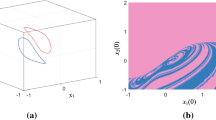Abstract
Electronic systems are vulnerable in electromagnetic interference environment. Although many solutions are adopted to solve this problem, for example shielding, filtering and grounding, noise is still introduced into the circuit inevitably. What impresses us is the biological nervous system with a vital property of robustness in noisy environment. Some mechanisms, such as neuron population coding, degeneracy and parallel distributed processing, are believed to partly explain how the nervous system counters the noise and component failure. This paper proposes a novel concept of bio-inspired electromagnetic protection making reference to the characteristic of neural information processing. A bionic model is presented here to mimic neuron populations to transform the input signal into neural pulse signal. In the proposed model, neuron provides a dynamic feedback to the adjacent one according to the concept of synaptic plasticity. A simple neural circuitry is designed to verify the rationality of the bio-inspired model for electromagnetic protection. The experiment results display that bio-inspired electromagnetic protection model has more power to counter the interference and component failure.
Similar content being viewed by others
References
Muchaidze G, Koo J, Cai Q, Li T, Han L J, Martwick A, Wang K, Min J, Drewniak J L, Pommerenke D. Susceptibility scanning as a failure analysis tool for system-level electrostatic discharge problems. IEEE Transactions on Electromagnetic Compatibility, 2008, 50, 268–276.
Perumalraj R, Dasaradan B S. Electromagnetic shielding effectiveness of copper core yarn knitted fabrics. Indian Journal of Fibre & Textile Research, 2009, 34, 149–154.
Yeh C T, Ker M D. Study of intrinsic characteristics of ESD protection diodes for high-speed I/O applications. Microelectronics Reliability, 2012, 52, 1020–1030.
Pommerenke D, Koo J, Muchaidze G. Finding the root cause of an ESD upset event. Proceedings of the 2006 DesignCon, Santa Clara, USA, 2006, 12–36.
Han L J, Koo J. Pommerenke D, Beetner D, Carlton R. Experiment investigation of the ESD sensitivity of an 8-Bit microcontroller. Proceedings of the IEEE International Symposium on Electromagnetic Compatibility, Hawaii, USA, 2007, 1–6.
Faisal A A, Selen L P, Wolpert D M. Noise in the nervous system. Nature Reviews Neuroscience, 2008, 9, 292–303.
Kitano H. Biological robustness. Nature Reviews Genetics, 2004, 5, 826–837.
Ay N, Flack J, Krakauer D C. Robustness and complexity co-constructed in multimodal signaling networks. Philosophical Transactions, 2007, 362, 441–447.
Negro F, Holobar A, Farina D. Fluctuations in isometric muscle force can be described by one linear projection of low-frequency components of motor unit discharge rates. The Journal of Physiology, 2009, 587, 5925–5938.
Stokes M. The spatiotemporal structure of population coding in monkey parietal cortex. The Journal of Neuroscience, 2011, 31, 1167–1169.
Noppeney U, Friston K J, Price C J. Degenerate neuronal systems sustaining cognitive functions. Journal of Anatomy, 2004, 205, 433–442.
Edelman G M, Gally J A. Degeneracy and complexity in biological systems. Proceedings of the National Academy of Sciences of the United States of America, USA, 2001, 98, 13763–13768.
Tepper J M, Wilson C J, Koós T. Feedforward and feedback inhibition in neostriatal GABAergic spiny neurons. Brain Research Reviews, 2008, 58, 272–281.
Hebb D O. The Organization of Behavior: A Neuropsy-chological Theory, Psychology Press, New York, USA, 1949.
Maren S. Synaptic mechanisms of associative memory in the amygdale. Neuron, 2005, 47, 783–786.
Weinberger N M. Associative representational plasticity in the auditory cortex: A synthesis of two disciplines. Learning & Memory, 2007, 14, 1–16.
Feldman D E. Synaptic mechanisms for plasticity in neo-cortex. Annual Review of Neuroscience, 2009, 32, 33–35.
Holtmaat A, Svoboda K. Experience-dependant structural synaptic plasticity in the mammalian brain. Nature Reviews Neuroscience, 2009, 10, 647–658.
Liu S H, Yuan L, Chu J. Electromagnetic bionics—a new area of electromagnetic protection. Chinese Journal of Nature, 2009, 31, 1–7. (in Chinese)
Liu S H, Chu J, Yuan L. Study and progress of electromagnetic bionics for electronic system. Journal of Academy Armored Force Engineering, 2009, 23, 2–6. (in Chinese)
Liu S H, Man M H, Ju Z Q, Chang X L, Chu J, Yuan L. The immunity of evolvable digital circuits to ESD interference. Journal of Bionic Engineering, 2012, 9, 358–366.
Eckhorn R, Reitboeck H J, Arndt M, Dicke P. Feature linking via synchronous among distributed assemblies: Simulation results from cat visual cortex. Neural Computation, 1990, 2, 293–307.
Xiong Y, Han W H, Zhang Y B, Yang F H. A design of pulse coded CMOS neuron circuit. Journal of Electron Devices, 2011, 34, 286–291. (in Chinese)
Lapicque L. Recherches quantitatives sur lexcitation électrique des nerfs traitée comme une polarization’. Journal de Physiologie et de Pathologie Générale, 1907, 9, 620–635. (in French)
Abbott L F. Lapicques introduction of the integrate-and-fire model neuron (1907)’. Brain Research Bulletin, 1999, 50, 303–304.
Matolin D, Schreiter S, Getzlaff S, Schuffny R. An analog VLSI pulsed neural network implementation for image segmentation. Proceedings of the International Conference on Parallel Computing in Electrical Engineering (PARELEC’04), Dresden, Germany, 2004, 51–55.
Xiong Y, Han W H, Zhao K, Zhang Y B, Yang F H. An analog CMOS pulse coupled neural network for image segmentation. Proceedings of 10th IEEE International Conference on Solid-State and Integrated Circuit Technology (ICSICT), Shanghai, China, 2010, 1883–1885.
Author information
Authors and Affiliations
Corresponding author
Rights and permissions
About this article
Cite this article
Chang, X., Liu, S., Man, M. et al. Bio-Inspired Electromagnetic Protection Based on Neural Information Processing. J Bionic Eng 11, 151–157 (2014). https://doi.org/10.1016/S1672-6529(14)60030-5
Published:
Issue Date:
DOI: https://doi.org/10.1016/S1672-6529(14)60030-5




